Chilean artists around the World and the Escadaria Selaron (Selaron Steps)
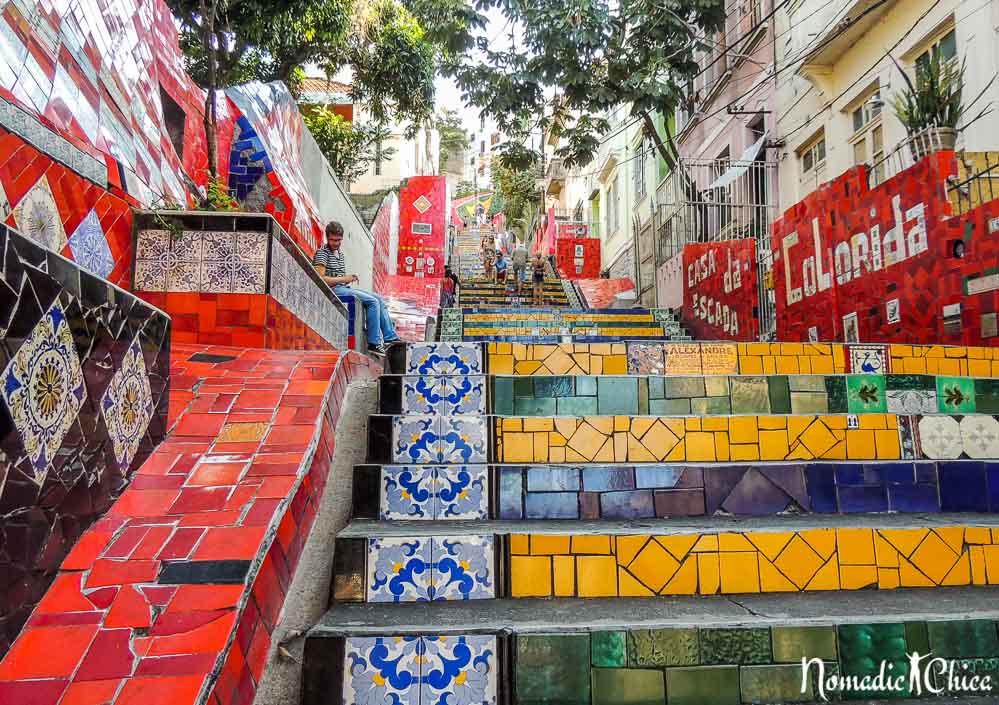
There are places that appear as if by magic when traveling. Sometimes I leave the city to surprise me and I wait to plan what I will do in the city only after taking a look at it. I love to walk in a new place without knowing much about what I will find. One of the surprises that I’ve had on my first trip to Rio de Janeiro was a place today very famous, and the most amazing to me was that it was made by a Chilean!
In my first few hours in Rio de Janeiro I went for a walk and in that journey we reach this point, it was Thursday night, so there were no tourists in the place, only two other people having a beer, just like us. I went back later during day time and: Ooh! Surprise! It is a very busy place, there where even lots of tourism mini buses arriving around mid-day (so avoid that time if you want to enjoy the place without the crowds).
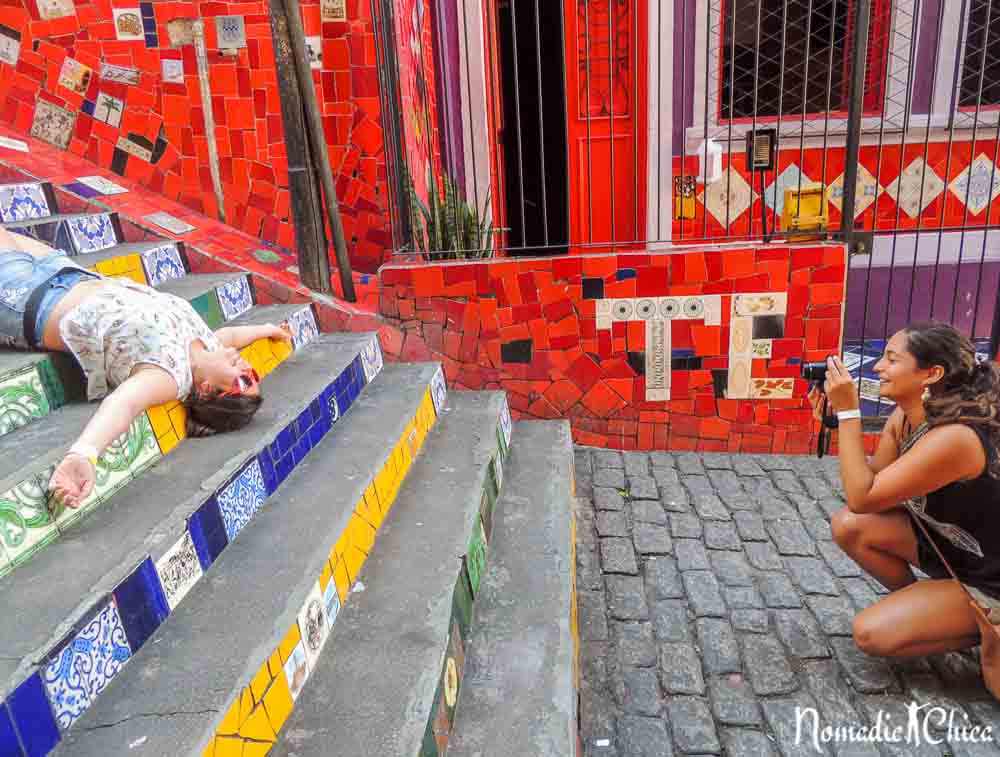
Located in Santa Teresa neighborhood, a very busy area near Lapa, which are one of the busiest areas of the city because of the artistic scene and night life in both.
The Escadaria Selaron takes place in a small road leading to the convent of Santa Teresa, why some know it as “Escadaria Santa Teresa”, very close to the Lapa Arches that were completely renovated for the World Cup held at 2014 in Brazil. 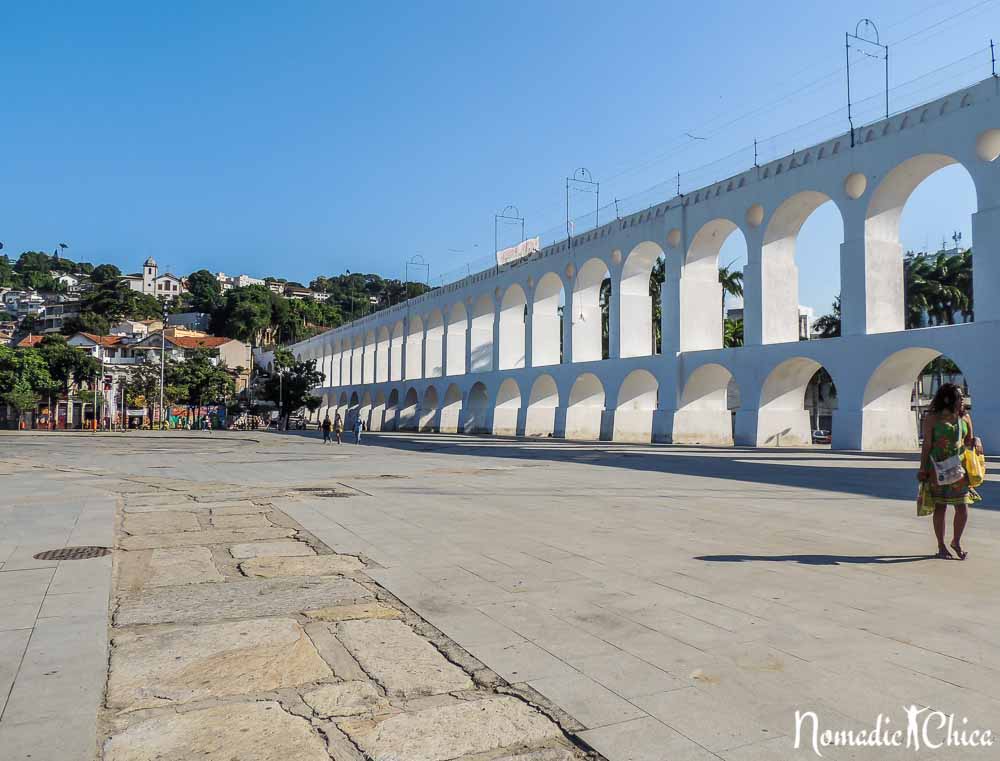
Jorge Selarón born in the city of Limache, in V Region of Chile. He traveled more than 50 countries and eventually settled in the city of Rio de Janeiro in the 80’s it began to decorate the staircase located steps from his home in 1990. It is said that the Escadaria Selaron was intended for him as a gift to the Brazilian city that he loved and began decorating in honor of the World Cup to be held in 1994.
Little by little he was adding small pieces of handmade pottery that himself was doing and later he eventually began receiving pieces as a gift from friends, visitors and fans who supported his work and sent tilings from all over the world.
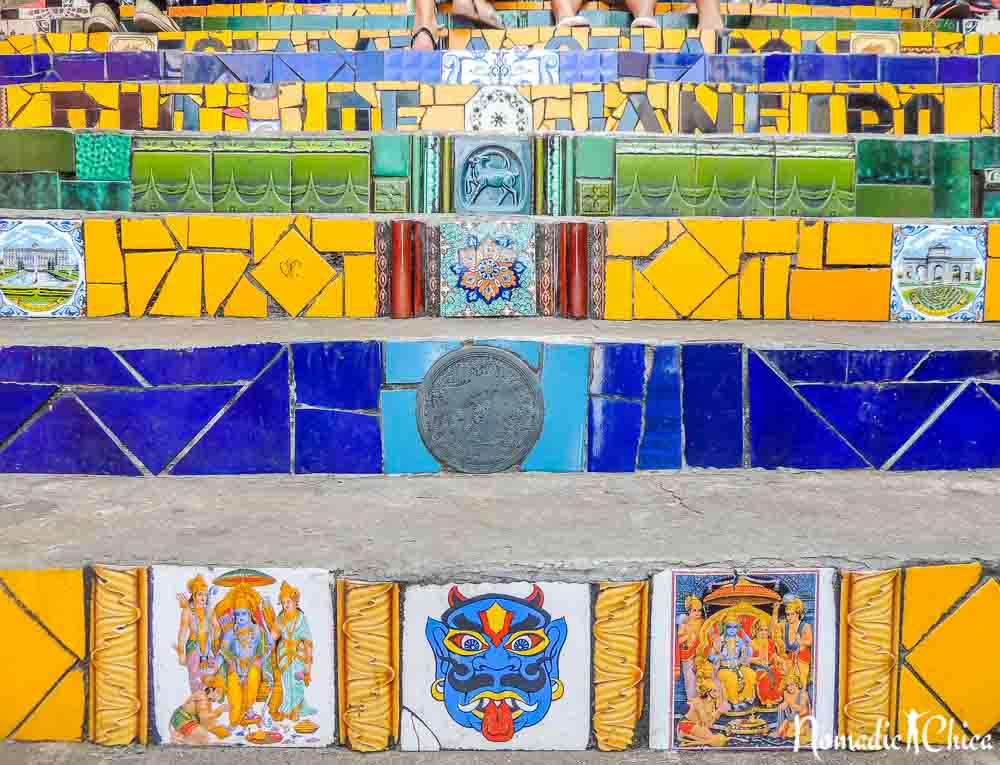
The work to this beautifully decorated 215 steps staircase took place over 23 years and it is fully covered with ceramic tiles all over its 125 meters long, his work includes a wide and diverse variety of design styles and colors.
Selaron started the design based on the colors of the Brazilian flag, but eventually was adding a variety that included more colors in it. In addition, for a long time it was a living and mutant work, as he called it, and constantly added or changed some of the pieces located along the steps or walls of this magical staircase.
Today includes pieces from more than 60 countries and more than 3000 tiles are now estimated along the Escadaria Selaron.
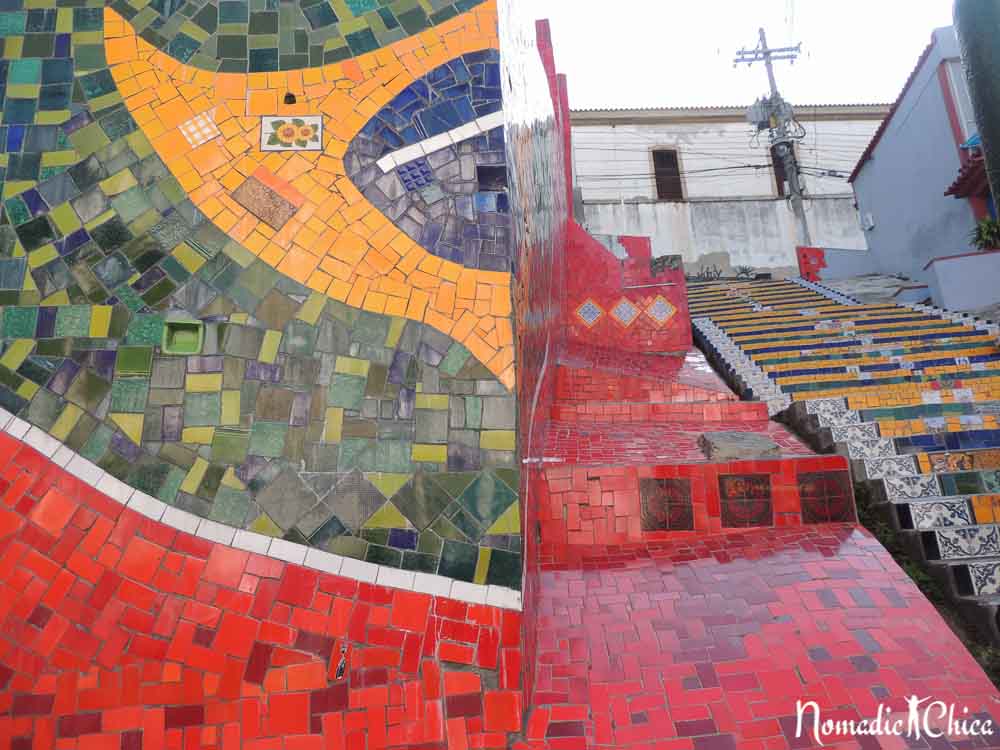
He drew and painted many pregnant women, paints he sold to support himself and to give continuity to the work at the stair, he followed every time mutating the steps every time he had materials to work on it .
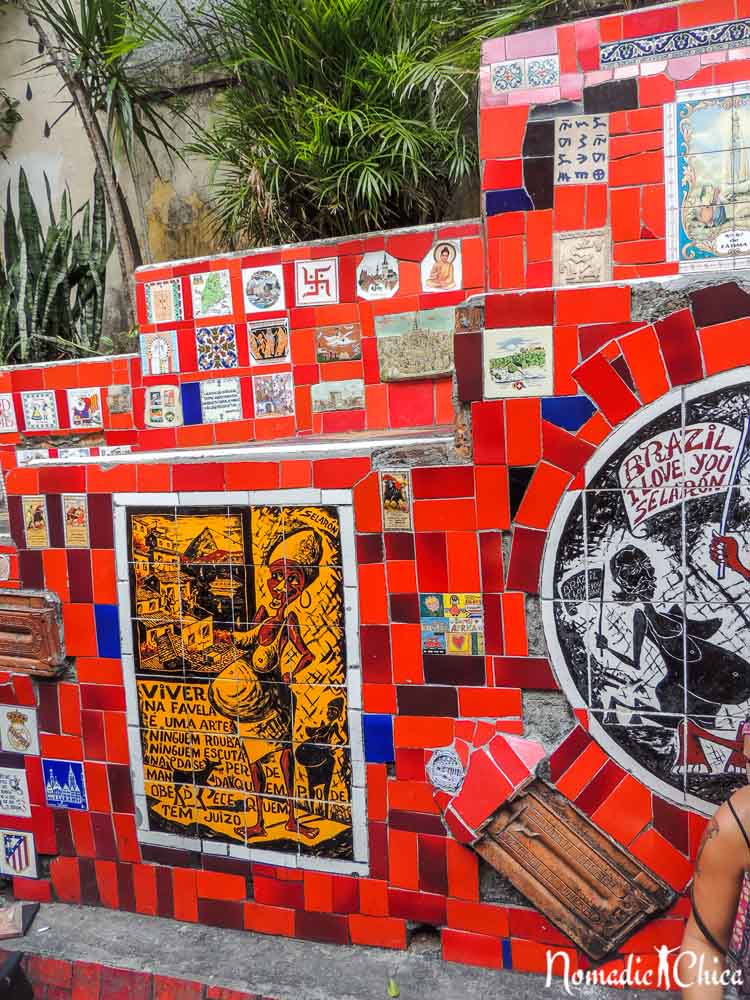
This work of art was declared a historical monument of the city of Rio de Janeiro in 2005 and later Selarón received the title of Honorary Citizen for his contribution to the culture of the Brazilian city .
Recognizing Selaron artistic work
Selarón’s greatest legacy was undoubtedly the Escadaria Selarón, which has had a presence in international and national media and has come to become one of the major touristic attraction in Rio de Janeiro.
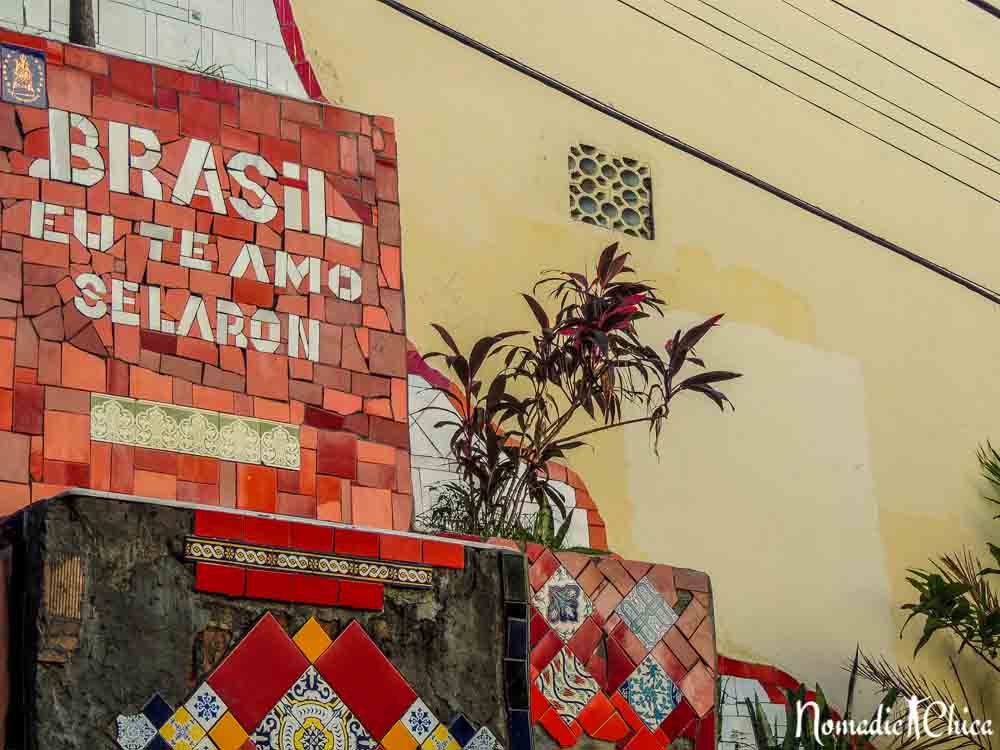
The Escadaria Selaron appeared on a television program in Brazil in 2009 and gained wide recognition in the country, and after appearing in a documentary on National Geographic, the Escadaria Selaron gained great notoriety abroad. It has been featured in commercials for major brands and there have even been filmed a few musical videos for U2, Snoop Dog and scenes from the film Hulk.
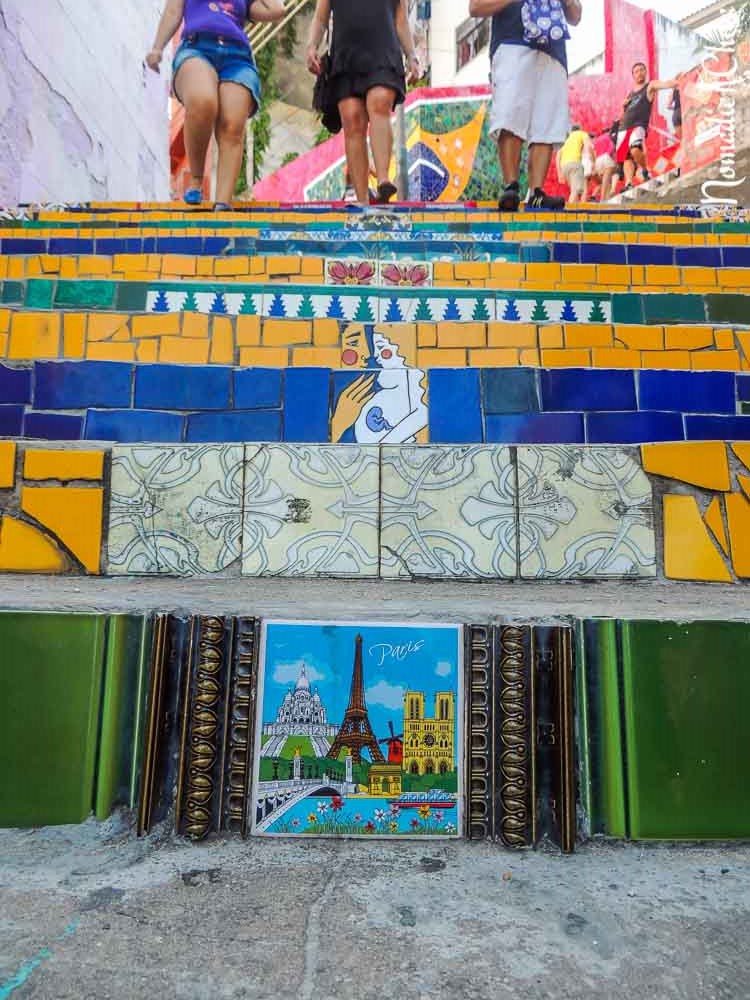
A story with a not too happy ending
Fascinated with my “discovery” in the city of Rio de Janeiro, I began to research the history of it. When I met a this place made by a fellow Chilean my joy was huge and the first thing I asked was: where’s Jorge? It was there that I learned that the artist passed away two years ago, on 2013.
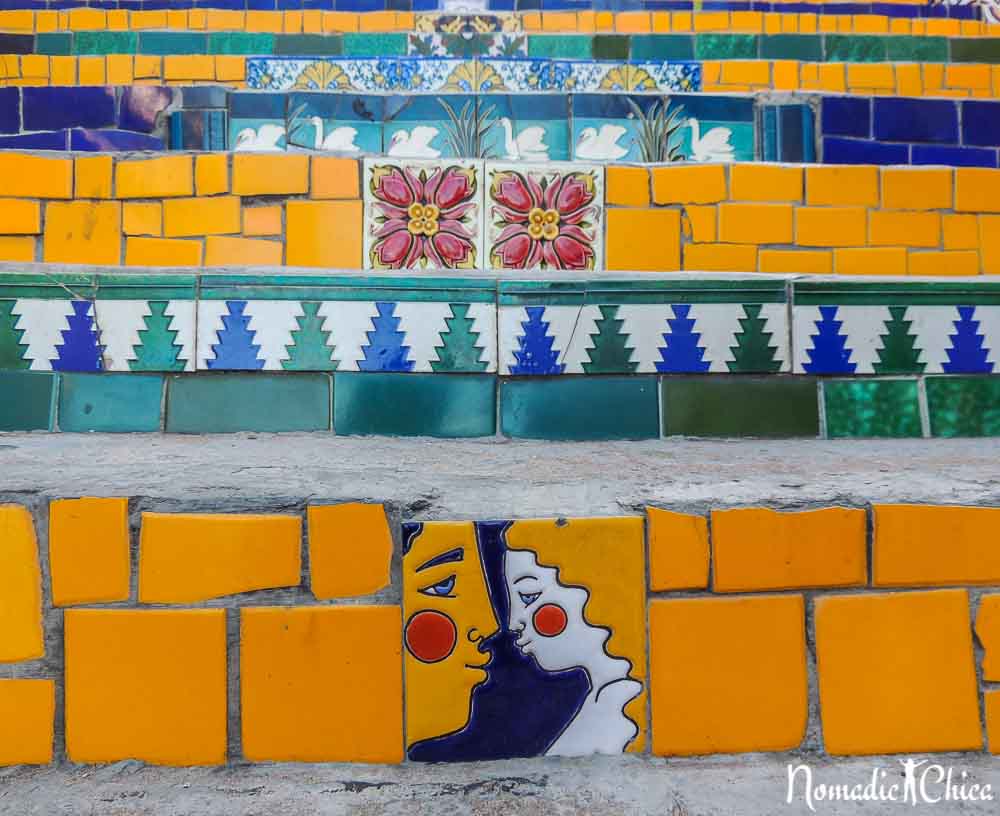
This Chilean artist was living near the stairs and was usually there, working and making little changes to the steps, selling his paintings, exhibiting his works or simply chatting with visitors and tourists.
His work in the EscadariaSelarón only stopped when the artist died in 2013 at age 65 .
Here is where the story gets a little sad. The artist was found dead with multiple burns on his body at the foot of the steps to which he devoted the last twenty years of his life and it’s now visited by almost all who are visiting Rio de Janeiro city.

There is still no clarity or consensus about what happened in that episode and you will still hear different stories recounting what happened to the painter and ceramist. I have heard different stories being in Rio de Janeiro about what happened to Selarón, stories of murder and threats against the artist guide a line, and a severe state of depression have others guessing this have led to suicide, the case is not yet clarified.
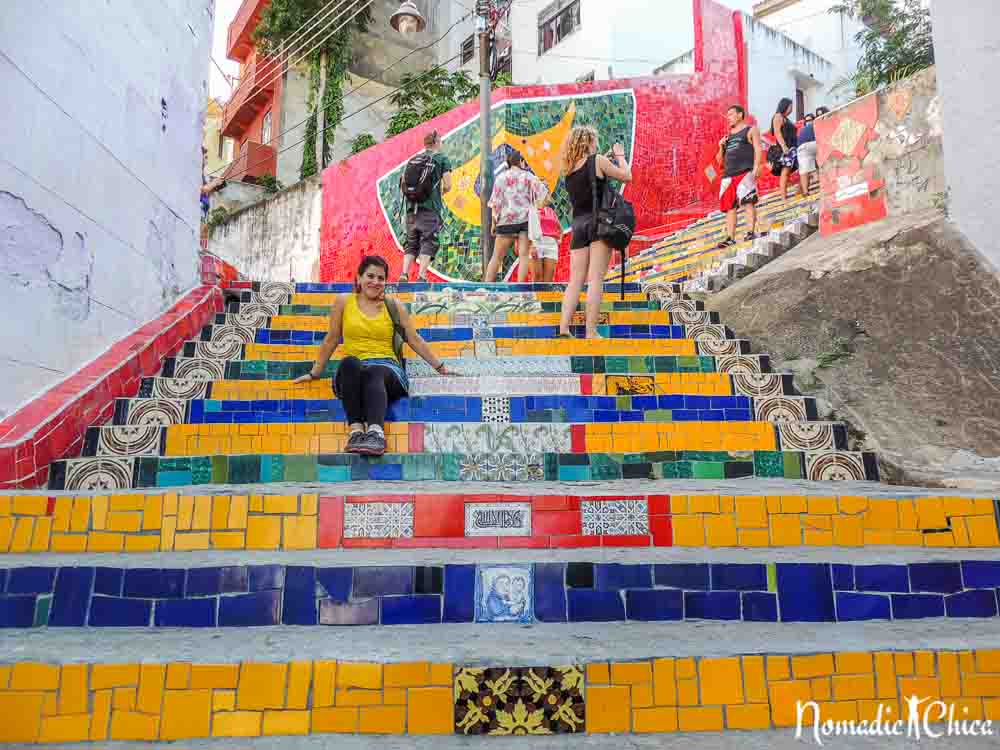
How to get there
Escadaria Selaron is located in Santa Teresa neighborhood in Río de Janeiro. The steps are exactly at Manoel Carneiro street (rua) and its base its in the corner of the streets Teotônio Regadas and Joaquim Silva.
If you go by Metrô
The station you need to get out at is Cinèlandia, from lines 1 and 2. You will need to walk around 600 meters trhough rua do Passeio, which will lead you to rua Teothônio Regadas.
If you go by bus (onibus) you have many options:
From Ipanema: You can take the Bus 464 at rua Visconde de Pirajá, you need to stop when it turns at rua Teixeira de Freitas, before arriving to the Lapa Arches. Then you walk through rua Teothônio Regadas and you will find the steps in front of you at rua Manoel Carneiro.
From Leblon: you can take the bus 464 at rua Ataulfo de Paiva.
From Copacabana: Take the bus 382 or 464 at Nossa Senhora de Copacabana. You need to exit before reaching the Lapa Arches. Walk to the East through rua Teixeira de Freitas and turn right at la rua Teothônio Regadas. Few meters later you will find the Escadaria Selarón.


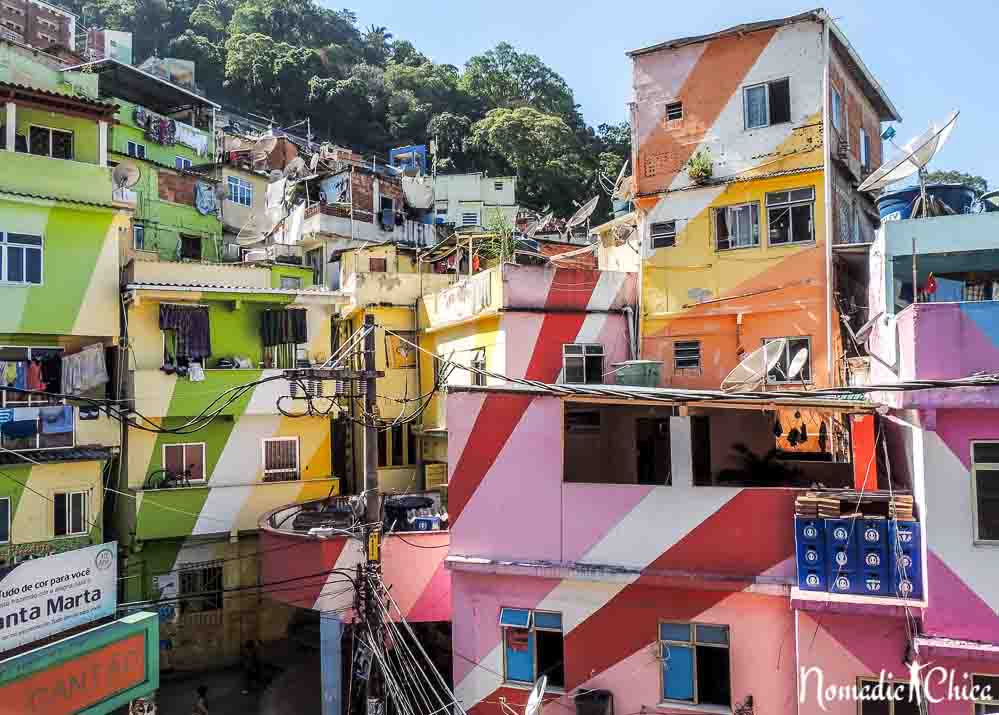














0 Comments
Trackbacks/Pingbacks